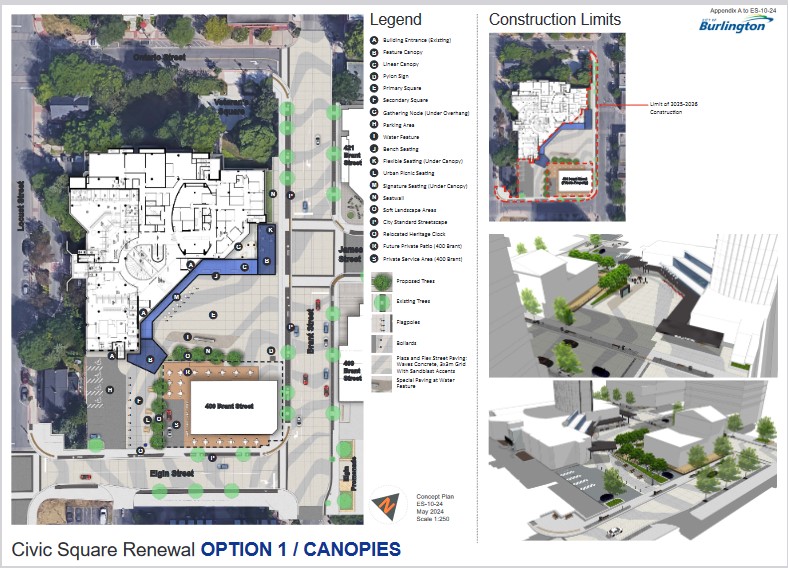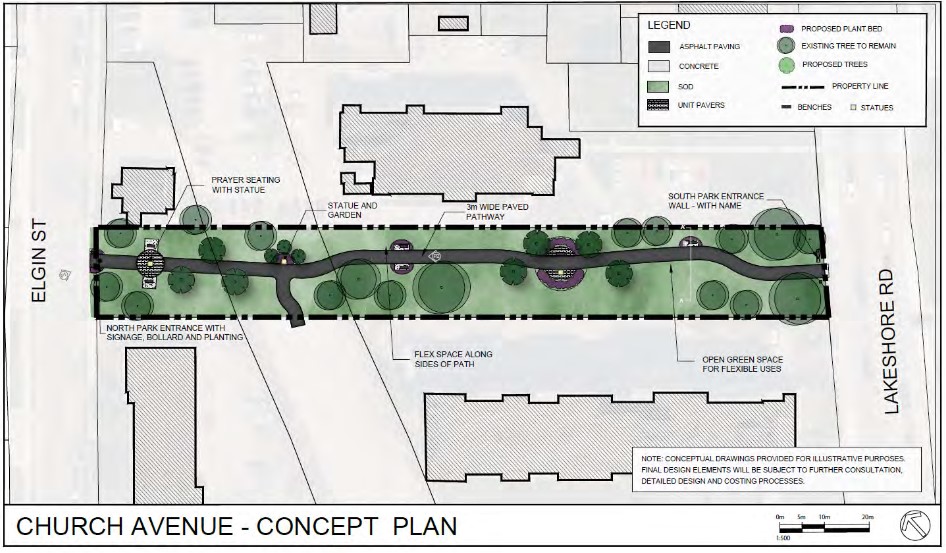With 11 delegations to Burlington’s Committee of the Whole on May 13 it looked like it would be a long day, again. However, the mayor and councillors managed to get through a robust agenda on time. Whether it’s on budget will be dealt with later in the year.
First up were Consent Items — reports of a routine nature, according to the clerk’s department.
Committee agreed to “receive and file” the environment and energy report from staff regarding the Climate Resilient Burlington Plan. This report looks at the plan in its second year of operation. A chart of what has been accomplished, what needs attention, and what has not been started was shown.
Out of 32 actionable items, one has been completed (investment in backup power for city buildings); 14 are underway (i.e. develop lake shoreline flood management strategy); 11 are ongoing without an end date (i.e. if necessary, update design standards for city infrastructure); and six have not been started (i.e. develop wind risk and vulnerability mapping).
In a separate agenda item, a request is to be made of Regional Council to amend its Burloak Regional Waterfront Park (BRWP) Master Plan to expand a planned washroom to allow accessibility services and a maintenance room for staff which will cost an additional $150,000.
A third item presented a tree planting initiative update from staff. Committee approved to allocate $175,000 from the tree establishment and enhancement reserve (money earned from the city’s private tree bylaw fees) to the Forestry operating budget in 2024 in order to fund the identified tree planting projects.
Councillors thanked city staff for facilitating the planting of some 56,000 trees and shrubs last year and hoped that this planting initiative would bring the city closer to its goal of expanding a canopy cover in the urban part of the city from 22% to 40% over the next decade.
The Environment, Infrastructure, and Community Services section saw four major reports before committee.
Item 11.1 on the agenda was an update from the engineering services department on three concept designs showing changes to the Civic Square renewal (in front of City Hall). The update cautioned council that it is too early to choose one concept over the other and that various elements may be interchanged. The $6 million Civic Square renewal plan began in 2023 and is expected to be finished in the summer of 2026.
Elements in the concepts include seating; shade elements; a water feature; potentially the removal and replacement of trees; changes to parking; shifting of the flag poles and heritage clock; and other minor landscaping plans. The entrances to City Hall will remain as they are today.

Next steps include public engagement through a public meeting, an online survey, an online narrated presentation, and continuing discussions with internal and external partners before a concept is chosen. Drawings and details will be available soon on the city’s website, according to Becky Ellis, supervisor of landscape architecture.
Item 11.2 was a request to extend the “Better Homes Burlington” project that saw 16 homeowners garner interest-free loans from the city (payable later through their property tax bills) to install heat pumps to replace existing fossil fuel heating systems.
Two of the homeowners wrote in to thank council for the initiative, pleased with the project and the assistance from staff in their implementation of the project.
The committee approved the proposal to extend the program to a further six homes in 2024.
Item 11.3 discussed the 118-year-old train station and assorted railroad rolling stock, known as the Freeman Station, which has been taken from the hands of the non-profit volunteer group, Friends of Freeman Station (FoFS). The building is owned by the city. The land is leased from nearby company Solenis. Little has been done on the site as the responsibility for it is in the process of being transferred to the Museums of Burlington.
Details as to how the station will be staffed, hours of operation, and, perhaps, a re-location to the Ireland House property on Guelph Line are being worked out (though the staff report recommended the station remain in its current location). Director of Museums Kimberly Watson of Museums of Burlington explained to committee that museum staff are already stretched to their limits and additional staff must be hired wherever the station may end up.
The total initial capital investment to convert the station into a programmable community facility use managed by Museums of Burlington is approximately $250,000. If the station were to move, it might cost an additional $3.5 million.
Ed Keenleyside of FoFS pleaded with the committee to keep the volunteers on hand to help guide and assist the Museums of Burlington as the project moved forward.
One objector to the plan was Joe Gaetan, who delegated that nothing should proceed until more financial statistics, such as potential revenue to be generated, become available.
After some back and forth, a motion from Councillor Kearns decided to put a hold on immediate plans while staff comes back with an interim report in September of 2024. Whether the final capital expenditure occurs as part of the 2025 or 2026 budget are to be decided later.
Item 11.4 was a delegation and proposal from Rev. Canon Stuart Pike and St. Luke’s Anglican Church member Rick Reycraft asking the city to approve a conversion of the empty lot that sits between the church and the lakefront into a walking, meditative pathway open to the public, to stretch from Elgin Street to Lakeshore Road.
The property was originally owned by Joseph Brant’s daughter, who donated the land to the township (in pre-Burlington days) with the stipulation that no obstructions be erected between the church and the lake — so that sailors coming from and going to Hamilton and Dundas could see the church on their voyage. Since the construction of the original church in 1834, the land has remained an open view but underused.
St. Luke’s wants to collaborate with the city to be allowed to construct the walkway but at one end of the property, the city has several parking spaces and a parking lot. St. Luke’s is asking the city to remove the parking to allow a free flow of the land they call “Church Avenue.”
Committee unanimously voted in favour of having staff collaborate with St. Luke’s on the feasibility of the accessible walkway.
Item 11.5 was a motion memo from Councillor Kearns, asking to install a level-3 electric vehicle (EV) charging station utilizing a parking spot design that results in no net loss of total parking spots in Lot #5B, located at 391 Brant Street. That prompted Don Prescott, from the city’s Accessibility Advisory Committee, to delegate and ask the committee to consider that the EV charger, and a select few other EV chargers throughout the downtown, be placed on larger parking spaces to accommodate specialized vehicles.
Prescott argued that some 28% of Ontario’s population have a disability and have to fight at every turn to be considered when it comes to infrastructure. He also mentioned that with the upcoming requirement that new vehicles all be powered without fossil fuels it meant that those driving specialized vans will turn to EV vehicles eventually.
Staff pointed out to the committee that some of the new EV installations have already taken place and changing parking allotments would be difficult.
The discussion became so muddled that Kearns instead referred the future installation of EV chargers back to staff and to have them come back with options and costs to make changes.
Those are the highlights from day one of the Committee of the Whole. A future article will cover two more agenda items that were dealt with on May 14.




